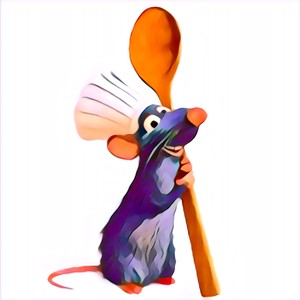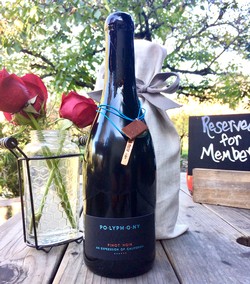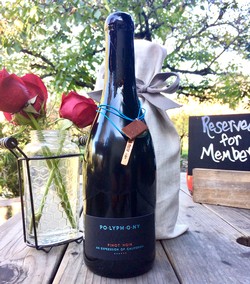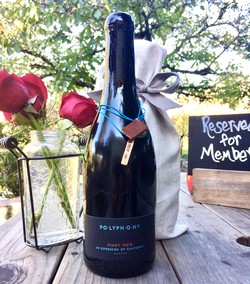Po·lyph·o·ny
A Symphony of Pinot Noir
I’ve answered the question a thousand times. Maybe ten thousand.
“How do you make your wines?”
People lean in like I’m about to share the coordinates to buried treasure.
I’ve given the full sermon — the vision, the strategy, the protocols, the alchemy of fermentation and oak and time. I’ve charted aging curves, broken down vineyard blocks, explained clone selections and how different yeast strains create unique flavors and textures.
And I’ve explained Po·lyph·o·ny — our flagship Pinot Noir — more times than I can count. A wine made from blending flavors and textures from four different vineyards, across four distinct AVAs. A contradiction to Burgundy’s thousand-year gospel of singularity and site. There, one vineyard — one parcel or climat — reigns. A Grand Cru sits on a throne, and a vineyard 100 yards away is a peasant. The site and soil determine the wine’s pedigree.
So who was I to rewrite history?
I used to say that making Po·lyph·o·ny was like coloring outside the lines — on purpose. Blending Pinot Noir from multiple vineyards? That wasn’t tradition. It was a quiet rebellion. A risk. But sometimes, to say something new, you have to rearrange the notes.
Po·lyph·o·ny wasn’t born from rebellion, though. It came more from a sense of responsibility to our purpose than anything else. We believe there are two qualities that make the greatest Pinot Noirs: complexity and ageability. That’s what the great vineyards of Burgundy bring to the table. They express those characters like no other expressions of Pinot Noir.
Because we craft 17 different single-vineyard Pinots from 10 different AVAs, the cellar at La Rochelle is like the Library of Congress of Pinot Noir flavors and textures. With complexity and age-worthiness as our guiding lights, creating Po·lyph·o·ny felt less like a choice — and more like a duty.
One afternoon, I explained it all again to a visiting chef. I laid it all out: Van der Kamp on Sonoma Mountain, Lester in Santa Cruz, Tondré in the Santa Lucia Highlands. Different clones. Different yeast strains. Different barrels from different forests, coopers, and toast levels. The whole mad orchestra.
He just smirked and said, “Ah. You’re making Ratatouille.”
I laughed. “Isn’t that just roasted vegetables?”
He looked at me like I’d asked if Beethoven did the dog movies. Then he gave me the best metaphor for how we make our wine... ever.
“The real dish,” he said, “is made with devotion.”
You cook each vegetable differently, he said.
Carrots? Roast some. Shave others raw. Braise some in ginger ale for sweetness. Pickle others in white wine vinegar for zing.
Eggplant? Fry some. Bake others.
Tomatoes? Confited, sun-dried, blistered on a flame.
You cook each piece separately, coax out every hidden nuance.
You build flavor, texture, contrast, and then layer them together into a dish so complex, so alive, no single bite is the same.
It’s not just vegetables. It’s an ode to humble ingredients elevated through obsessive care.
It’s love in edible form.
It’s chaos and harmony on a plate.
And that’s what we do. With every fermentation. Every barrel. Every decision. It’s not about showcasing one place — it’s about honoring many. Not simplifying — amplifying.
Tondré Grapefield alone gives us two clones, three fermentation paths per clone, and different yeasts on each. Six wines, just from one vineyard. Aged in barrels with different grain densities, toasts, forests. Some soften. Some spice. Some cradle. Some push.
Multiply that across four vineyards and a dozen fermentation lots, and what you get is Po·lyph·o·ny. California as a sacred site. A tapestry. A symphony. A Ratatouille of grapes.
And it may just be the most elegant, age-worthy, expressive wine we produce.
Because if you can make something this thoughtful, this layered, this soulful — you damn well should.
So yeah… we make Ratatouille. But we make it with grapes.
And it may be the thing I’m most proud of.
National Pinot Noir Day Specials




